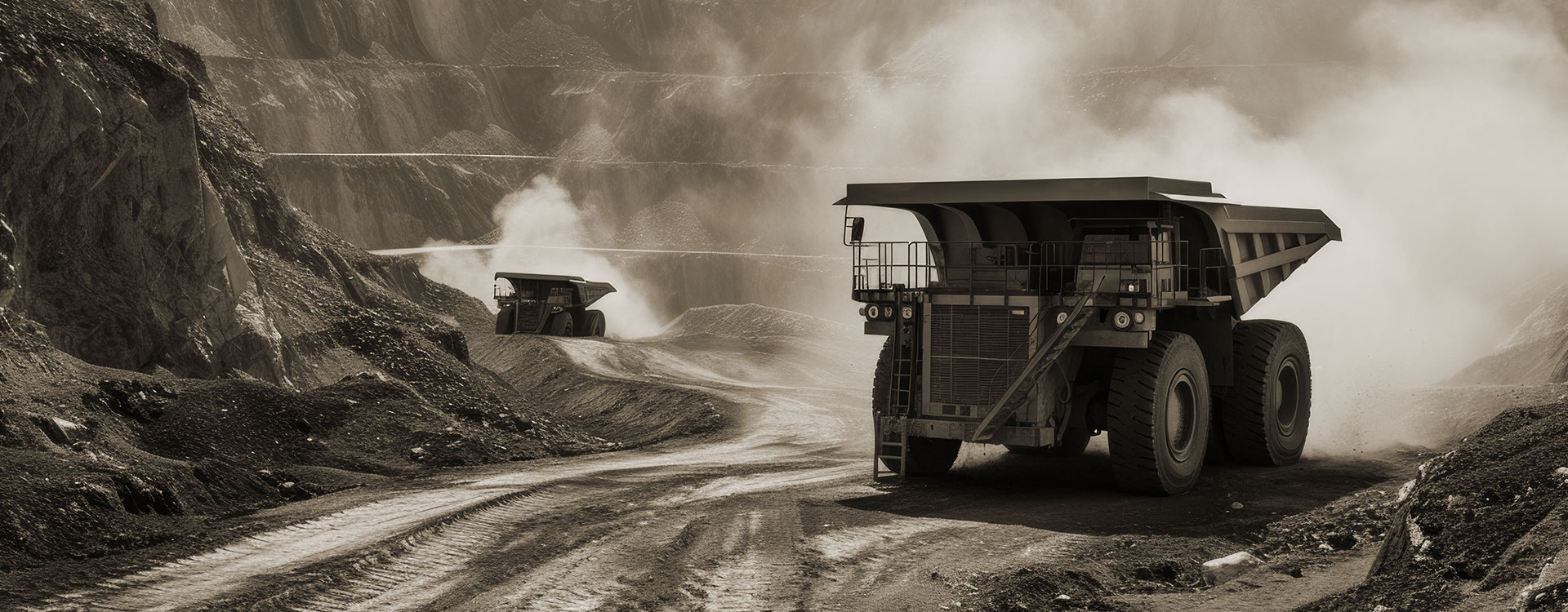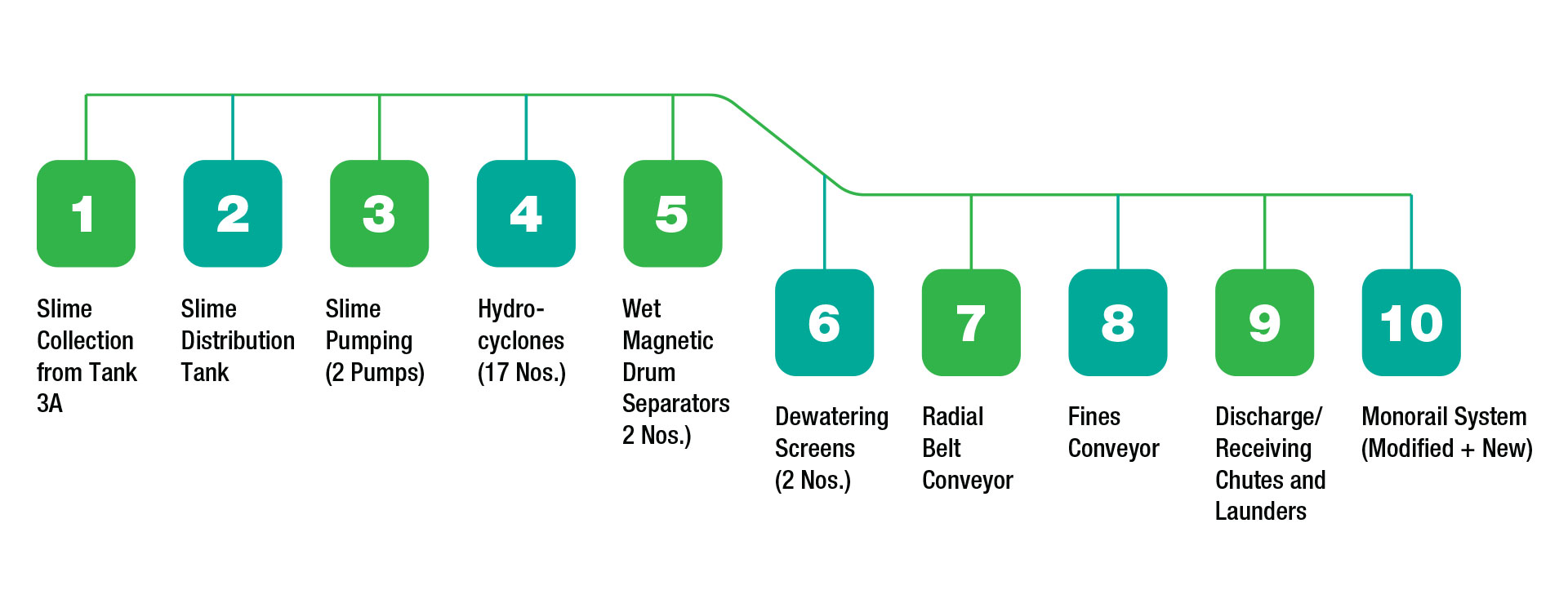


To produce slime product with a grade of +61% Fe from a feed having 54-55% Fe.
The low grade reject from Slime beneficiation system to be transported to existing Tailings Thickener of the mines.

Kiriburu Iron Ore Mine (KIOM), located in the West Singhbhum district of Jharkhand, India, has been operational since 1964. Initially managed by the National Mineral Development Corporation (NMDC), it was transferred to Steel Authority of India Limited (SAIL) in 1978 and has since been operated under SAIL's Raw Materials Division (RMD). The mine has a Run of Mine (ROM) processing capacity of 5 Mtpa, supplying iron ore lump and fines to the Bokaro Steel Plant (BSL). The Ore Processing Plant at KIOM included three stages of crushing and wet screening, along with the classification of iron ore fines using spiral classifiers.
The overflow from the classifiers, containing particles finer than 200 microns, formed what was known as "slime." This slime was initially treated as waste and disposed of in a slime pond.
Despite being considered waste, the slime contained valuable iron ore fines, presenting an opportunity to recover these fines and improve operational efficiency. The Slime Beneficiation System was implemented to recover these valuable iron ore fines, reducing environmental waste while enhancing resource recovery.

The system included several key components, starting with a pneumatically actuated gate in the existing opening of Tank 3A, which controlled the discharge of slime into the beneficiation system. A tapping arrangement, with another pneumatically actuated gate, was also installed for precise control over slime extraction from Tank 3A. The slime was directed into a slime distribution tank, ensuring uniform flow to subsequent processing stages. Two pumps were provided to transport the slime through the system, followed by a cluster of 17 high-performance hydro-cyclones. These hydro-cyclones classified the slime by separating finer particles from the coarser ones. The classified material then passed through two wet magnetic drum separators, crucial for recovering the magnetic iron ore fines from the slime. The next stage involved two dewatering screens that removed excess water from the concentrate, preparing it for further processing. A radial belt conveyor was then used to transport the dewatered concentrate to the existing fines conveyor for handling.
In terms of infrastructure, all discharge and receiving chutes were equipped with manganese steel liners to prevent wear and tear from the abrasive materials. Launders and pipelines were used for receiving and discharging the slime and concentrate. Additionally, the existing monorail system was modified, and a new monorail system with an electric hoist was installed to facilitate the handling of materials and equipment throughout the beneficiation process.
The layout of the Slime Beneficiation System, as detailed in the project design, ensured that the components were arranged efficiently to maximize the recovery of iron ore fines while minimizing operational bottlenecks. The system was designed not only to improve the recovery of valuable iron ore fines but also to reduce waste and environmental impact. By recovering these fines from the slime, the mine significantly reduced the volume of waste slurry that would have otherwise been disposed of in the slime pond.

The expected benefits of the Slime Beneficiation System included enhanced resource recovery, as valuable iron ore fines that were previously considered waste were effectively utilized. This resulted in reduced environmental impact by minimizing waste disposal, as well as improved operational efficiency by recovering iron ore that would have otherwise been lost.
Additionally, the economic value of the recovered fines contributed to greater returns on investment for the mine. This project aligned with sustainable mining practices and demonstrated the potential for more efficient, environmentally responsible resource management.
The successful implementation of our Slime Beneficiation System at Kiriburu Iron Ore Mine is a testament to CFlo’s commitment to resource optimization and sustainable mining practices. By recovering valuable iron ore fines from the slime, we not only enhanced the operational efficiency of the mine but also significantly reduced environmental waste. This project marks a crucial step toward maximizing the potential of every resource and setting a benchmark for future mining operations in India.
The Slime Beneficiation System at Kiriburu Iron Ore Mine significantly improved both the environmental and economic performance of the operation. By recovering valuable iron ore fines from the slime, the mine increased its overall production capacity, reduced waste, and promoted sustainable mining practices. This initiative not only enhanced the operational efficiency of KIOM but also supported long-term resource conservation efforts in the region.